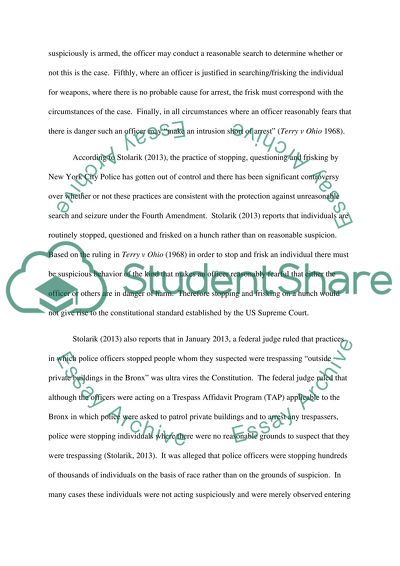Terry v Ohio Stop Question Frisk Essay Example | Topics and Well Written Essays - 500 words. Retrieved from https://studentshare.org/miscellaneous/1614630-terry-v-ohio-stop-question-frisk
Terry V Ohio Stop Question Frisk Essay Example | Topics and Well Written Essays - 500 Words. https://studentshare.org/miscellaneous/1614630-terry-v-ohio-stop-question-frisk.


